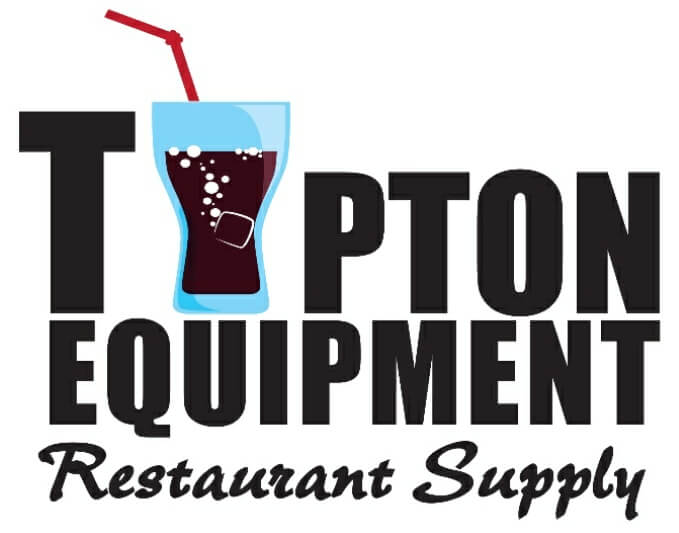What’s in a Cooking Pot? How to Choose the Right One
March 19, 2018As a restaurant owner, your cooking needs might vary.
Did you know that a good quality pot can greatly improve your cooking experience, while also improving the quality of your cooking? This cooking equipment is a very important one that cannot be done away with despite all of the advancements in technology.
Rather than purchasing many different sizes, shapes and kinds of this cooking equipment, a few carefully selected pieces might be all you need. Consider a few important tips to keep in mind when shopping for a quality pot.
Size
Size is a very important factor when selecting any cooking equipment. It is thus important that you are decided on size before you begin shopping. Keep in mind that pots vary wildly in size, generally ranging from 6 to 20 quarts for residential usage. However, as a restaurant owner serving a large customer base you might seek a bigger version of this cooking equipment, and you’d be sure to find those above 20 quarts if needed. But pots 12 quarts and above should do. Note that as a pot gets larger it is also likely to get heavier – depending on the pot material.
Materials
As with every cooking equipment, the materials from which pots are made play a huge role in their ease of use and specific functional applications. Consider a few:
Stainless steel: Smooth, shiny surface metal for easy visibility. It is a poor heat conductor, but it also is entirely nonreactive to any food type and very durable. It is also a very versatile cooking equipment for many food types.
Aluminum: They heat faster than stainless steel, and are usually very lightweight, but they also require more care and are more difficult to clean and maintain due to their ability to interact with foods that are acidic, alkaline, and sulfurous.
Copper: A great heat conductor, copper heats quickly and is warm on the eye. It is also highly reactive with food – interacting poorly with acidic and alkaline foods, but will last you if the pots are lined and you polish it often enough.
Non-stick Coating: High resistance to heat and abrasion, and useful for solid foods with high sticking possibility.
Cast iron: Heats up slowly but retains heat for long. It needs regular drying and oiling to keep it safe but that can be solved by purchasing one with enamel coating.
Shape
This cooking equipment comes in a variety of shapes. While they are conventionally tall and narrow, pots particularly designed for cooking soups are usually short and wide to allow for easy stirring. Wide pots, though, do not evenly spread heat around due to their large bases, while narrow pots are usually more consistent with their heat spread due to their narrow base.
Handles and Lids
As a restaurant owner, you would probably be needing this cooking equipment to not only serve you well on the stove but to also be heatproof for oven use. While you are likely to seek out handles that do not retain heat, such as plastic and wooden handles, these handles may have issues with heat. In this case, stainless steel handles are best for you. Properly welded handles might also serve you longer than riveted ones.
Construction
Pots with thick and heavy bases transfer heat at a much slower rate than thinner pots. These kind of pots are great for long, slow cooking. When this kitchen equipment has a thick base, it prevents ingredients from sticking to the bottom of pots. Pots with composite builds – whether these are all-clad composite pots or base insert composite pots – are also better at transferring heat evenly through a pot.
Choosing the right cooking equipment for you can feel overwhelming at times. But it shouldn’t be. Consider the types of food you’ll be cooking and the pots that will best satisfy these needs, also consider your budget (this cooking equipment can get really expensive when it becomes more specialized and advanced) when selecting the right one for you.
5 Things Every Restaurant Owner Should Do Before Buying Used Kitchen Equipment
Equipping your restaurant properly can cost a lot of money, so buying used kitchen equipment is the go-to choice for many restaurateurs. Buying used kitchen equipment for a restaurant is a bit different than buying used equipment for your home, however. You will...
Pulping and Grinding: A Starter’s Guide to Reducing Commercial Food Waste Costs
For most restaurant owners and managers, the expenses involved in making meals are always under careful consideration. Water is needed to prepare, cook and wash food; power is necessary for food prep, cooking and cooling, and so on. However, how many of us consider...
Are High Speed Ovens Too Good to be True?
You might have heard a few of the bold claims that foodservice equipment manufacturers have been making about high speed ovens, but they can’t be possible, right? Cooking three times as faster as regular ovens? Five times as fast? Fifteen times as fast? It may seem...
How to Eliminate Excess Condensation in Your Kitchen
Is your commercial kitchen getting steamy? If so, you could have more than just an uncomfortable working environment on your hands. Excess moisture in your commercial kitchen can result in the corrosion of equipment, the development of mold, and even damage to your...
Pest Preventions to Implement in Your Commercial Kitchen
Restaurant pests: it’s something that few people want to think about. Like it or not, pest management is an essential consideration for every commercial kitchen. Offering food, shelter and water, the unprepared commercial kitchen naturally provides everything pests...
Top Restaurant Technology Trends in 2018
When looking to buy restaurant supplies, you want to be on the leading edge of technology trends. This will keep your kitchen running smoothly. Let’s take a look at some of the most recent trends in restaurant supplies technology. 1. New Payment Options Who would...
Choosing the Right Milk Cooler: Cold Wall or Forced Air?
In a restaurant, milk is an essential to have on hand for coffee and other café-style beverages, for serving with kids’ meals, and as a key ingredient in many recipes. Keeping your milk properly chilled can be difficult without the proper restaurant equipment....
Choosing the Right Food Storage Containers for Your Restaurant
Choosing the right kitchen supplies will make a difference in your restaurant. Whether it is heavy duty kitchen equipment or food storage containers, each piece of equipment plays its own important role. Today, we are going to talk about how to choose the right food...
The DIY Guide to Your Restaurant’s Own Garden
Stocking your restaurant supply with your own home-grown herbs and produce can truly bring your dishes to life. When it comes to food, everyone knows there’s nothing like homemade and home-grown. Having your own culinary garden, however large or small, can help you...
Choosing the Right Material for Your Cooking Equipment
Kitchens are very unique to their chef. Just like a car mechanic has a toolbox unique to them, so is the cooking equipment in a kitchen. And over time, the same cooking equipment become a natural extension of the chef. What tools are you using in your kitchen? It...
5 Different Ice Shapes and Why You Should Care About Them
Ice makers are very popular in the restaurant and foodservice community because they eliminate the need to buy ice every day. And of course, adding an ice maker to your collection of foodservice equipment means you will always have ice on hand when you need it. An...
How to Choose Your Next Commercial Meat Smoker
The movies that connect with us on a personal level are the ones that linger in our memories forever. Anyone who has used a commercial meat smoker knows that they have a huge influence on the taste of a meal. You need to have just the right kitchen equipment to get a...
Tipton’s Guide to Perfect Poultry Trussing
Do you ever truss birds in your commercial kitchen? Trussing is a fantastic cooking technique because it makes poultry cook faster, look more attractive and taste better. If your commercial kitchen prepares poultry, you don’t want to miss these trussing tips. Trussing...
5 Reasons a Meat Grinder Will Set Your Burgers Apart
The more you do to prepare your foods in-house with the right kitchen equipment, the fresher and more flavorful your dishes become. There are all sorts of restaurants offering fast-food style burgers, but some diners are looking for the real deal. A fresh, juicy...
Kitchen Hacks for Your Home
Some people are naturally good at certain skills. We all know someone who is naturally book smart, athletic, or musically inclined. What makes you jealous of them is how easy they make tasks seem compared to you. One skill might be cooking. Your dream may not be...















